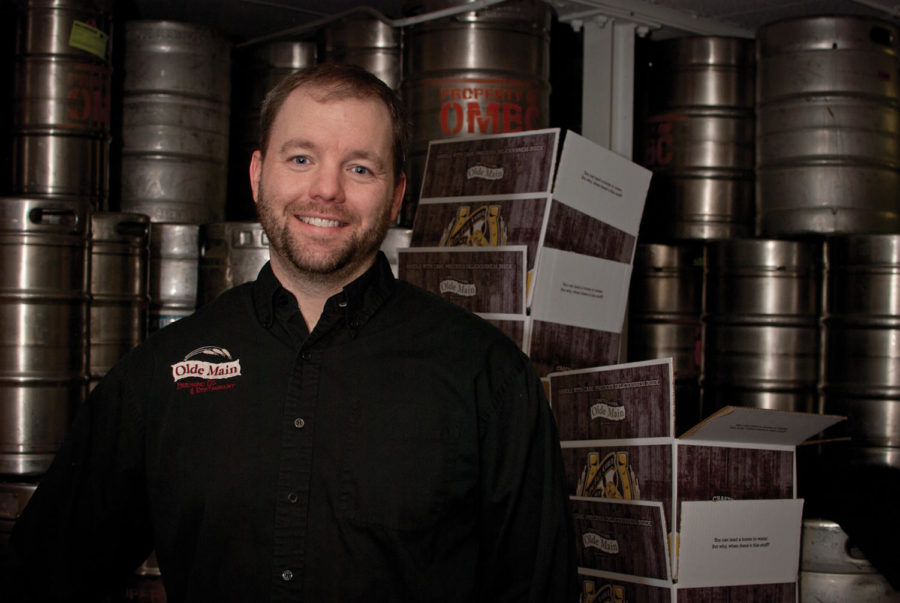New brews, more booze
October 24, 2011
Iowa beer lovers are going to start noticing more taste in their local brews.
On March 2010, former Iowa Gov. Chet Culver signed a bill into law changing the legal limit on alcoholic content in beer from 5 percent to 15 percent. This new legislation allows breweries to apply for a new license that allows them to create beer with higher alcohol content. The bill also allows for wholesalers to purchase and sell beer with the higher alcohol content after purchasing a new license.
Although this law was changed more than a year ago, both customers and the economy are just starting to notice the effects.
“The law allows me to be more creative; I’m definitely excited,” said Olde Main Brewing Co.’s Brewmaster Jeff Irvin. “Before, there were about 30 percent of beer styles that Iowa brewers were limited to. Now there’s more room for experimentation. The law allows us to bring more products to the market, which will draw more customers. Brewing more locally will help businesses.”
This wasn’t the first time legislation was proposed to increase the alcoholic content in beers distributed in the state. This time, local businesses advocated through the Iowa Wholesale Beer Distributors Association.
Luxury beers tend to have higher alcohol content and local breweries could not brew them, making Iowa customers dependent on breweries outside of the state.
Local breweries like Peace Tree Brewery in Knoxville, Iowa, are also in favor of this new law that seems to give the business a competitive edge against bigger breweries.
“Other breweries outside Iowa were able to brew beers with higher alcohol content that we weren’t. Now we are able to compete and do the same thing,” said Megan McKay Ziller, co-owner of Peace Tree. “When we are able to brew more styles, we become more credible to local consumers; it makes a huge difference. We hope to work together with customers to increase business and on a greater scale, create more jobs within our brewery.”
Peace Tree has starting creating several new brews, and Olde Main plans on experimenting more when space opens up in the brewery.
“We’ve created a few new beers and they were highly successful. We would love to do bigger styles as soon as we have the storage capacity in the brewery. We also need longer amounts of time because most of these beers take longer to age,” Irvin said. “We love to talk to people about what we should brew; the consumer pushes the product.”
After the bill passed, Olde Main conducted an online poll to determine what customers want the first high-proof beer to be.
Prices of these new brews will be more expensive than the average beer. Stronger beers require more ingredients, longer amounts of time and more storage; the price will reflect the beer’s quality.
Both Irvin and McKay Ziller agree that although beers will have higher alcohol content, it will not have an effect on how much beer people will consume.
“People pay attention to what they are drinking,” McKay Ziller said. “These heavier beer styles are more filling, so they won’t need to drink so much to be full. I really don’t think people will abuse these brews.”
Although these higher alcoholic beers are available, it is also important to remember to always drink responsibly.
“People are going to drink what they want to,” Irvin said. “I just stress learning limitations. Beer is food, you wouldn’t eat 24 cheeseburgers; why would you drink 24 beers?”







